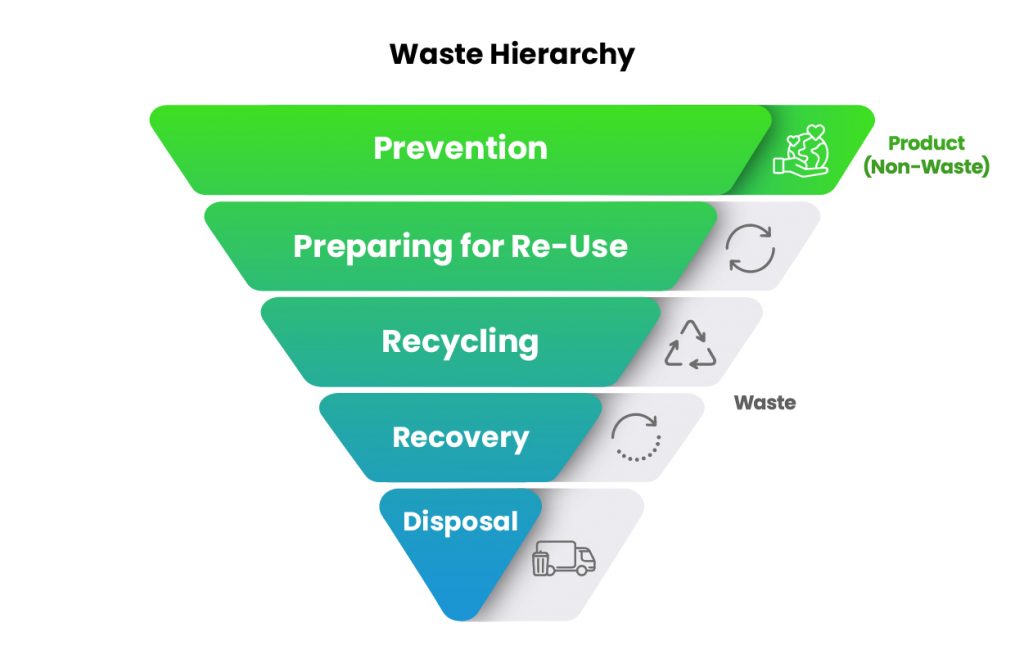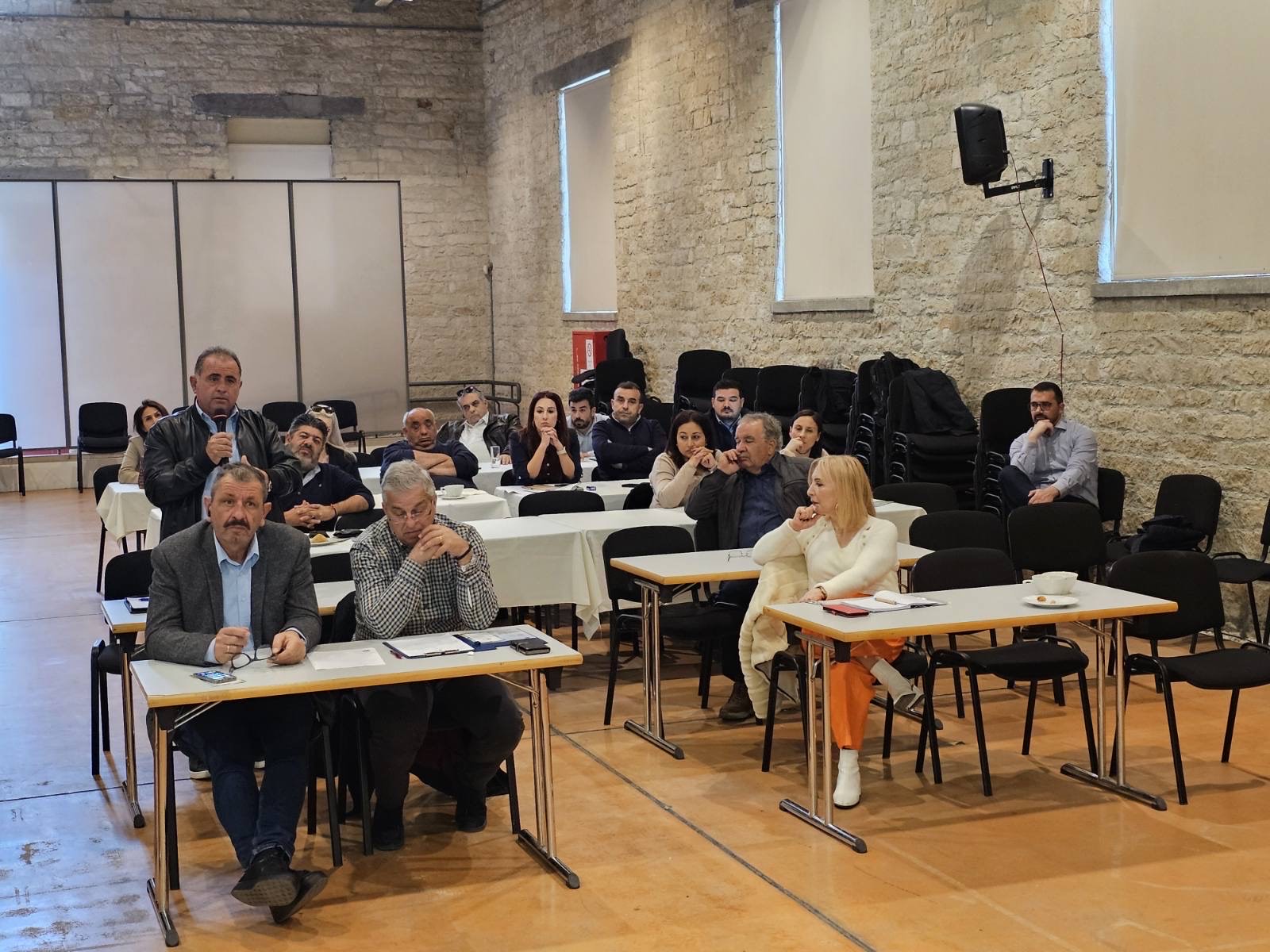Learn about WASTE
Content
Follow Our Social Media
Reduce waste
Circular economy
Circular Economy is a production and consumption model that aims to increase the efficiency of raw materials, through the use of materials for a longer period of time, while minimizing the use of resources used in the production process.
In practice, Circular Economy implies the reduction of waste to the minimum possible level, aiming to preserve the value of products, materials and resources for as long as possible, returning them to the product cycle until the end of their use. Thus, when a product reaches the end of its life, its construction materials are retained within the economy to be used again and again, creating added value to the product.
Circular Economy comes in response to the ambition for sustainable development, which includes exchanging, renting, reusing, repairing, refurbishing and recycling existing materials and products to the greatest extent possible. In this way, what was previously considered as “waste” can now be turned into raw material, effectively contributing to extending the life cycle of products and achieving sustainable development (1).
Waste Management Hierarchy
- without endangering human health and harming the environment,
- without risk to water, air, soil, plants or animals,
- without causing a nuisance through noise or odours, and
- without adversely affecting the countryside or places of special interest
In addition, it explains when waste ceases to be waste and becomes a secondary raw material, and how to distinguish between waste and by-products. The Directive also introduces the “Polluter Pays Principle” and the “Extended Producer Responsibility” (3).
The foundation of EU waste management, is the five-step waste management hierarchy, established in the Waste Framework Directive. In this hierarchy, an order of preference for managing and disposing of waste is established, while, basic concepts and definitions related to waste management, including definitions of waste, recycling and recovery, are also defined.
The Waste Management Hierarchy is a conceptual framework designed to guide and rank waste management decisions at both the individual and organizational level. In simple words, it is a simple ranking system used to determine which option of waste management is best for the environment. More precisely, it gives top priority to waste prevention, followed by re-use, recycling (including composting), and energy recovery, while waste disposal in landfill sites is the least preferred option (4).
As part of the EU waste legislation, specific targets are also set to increase the recycling of specific waste streams, such as electronic equipment, cars, batteries, construction, demolition, municipal and packaging waste, as well as to reduce the landfilling of bio-degradable waste (3).

for a healthier planet
WASTE Streams
Bio-waste are biodegradable plant or animal waste or biodegradable waste consisting of fungoid material, such as:
- garden and park waste;
- landscape management waste;
- food and kitchen waste from households, restaurants, caterers and retail premises and comparable waste from food processing plants; and
- waste from other areas of origin comparable to the [above] waste, by type, nature or material characteristics (6)
Hazardous household waste (HHW) may be defined as waste that could potentially increase the hazardous properties of municipal solid waste when landfilled, incinerated or composted.
The term “hazardous household waste” is not clearly defined in EU legislation, while there is no specific regulation specifying the management of such waste, with the exception of WEEE and batteries.
According to the latest EU guidelines (2020), HHW classification includes:
- Household chemicals (household cleaning and personal care products, paints, varnishes, ink and glues, household and garden pesticides, photochemicals, packaging)
- Domestic healthcare waste (pharmaceutical products, sharps and other potentially infectious waste)
- Construction and demolition waste (asbestos waste, treated wood , coal tar and tarred products)
- Automotive maintenance waste (oil filters and contaminated absorbing materials, automotive products, surface polish, anti-freeze fluids)
- Mercury-containing waste (other than WEEE) (7).
Waste from Electrical and Electronic Equipment (WEEE) includes a large range of devices such as computers, fridges and mobile phones at the end of their life. This type of waste contains a complex mixture of materials, some of which are hazardous. These can cause major environmental as well as health problems, if the discarded devices are not managed properly (8).
Agrowaste or Agricultural Waste is unwanted or unsalable materials produced wholly from agricultural operations directly related to the growing of crops or raising of animals for the primary purpose of making a profit or for a livelihood (9).
Some examples of agricultural waste include:
- Grape Vines
- Fruit Bearing Trees
- Vegetables
- Date Palm Fronds
Food waste is any food, and inedible parts of food, removed from the food supply chain to be recovered or disposed (including composted, crops ploughed in/not harvested, anaerobic digestion, bio-energy production, co-generation, incineration, disposal to sewer, landfill or discarded to sea) (10).
Recyclable waste consists of recycling materials that include paper, cardboard, metal cans and plastic, which can then be put into one waste stream and be processed efficiently & effectively.
Marine debris (or marine litter) is defined as any solid material discarded, disposed of or abandoned in the marine and coastal environment.
Common items of marine debris include: plastic bottles, fishing nets, food packaging, crates, cigarette butts, gloves, buckets, rope, fishing gear, packing materials, light globes, plastic bags (11)
Reducing Waste
Waste Legislation
National Legislation
EU Legislation
- Waste Framework Directive (Directive 2018/851 of the European Parliament and the Council on amending Directive 2008/98/EC on waste). It sets the basic concepts and definitions related to waste management, such as definitions of waste or recycling. It introduces the waste hierarchy, the Polluter Pays principle and the Extended Producer Responsibility and sets out separate collection targets.
- Landfill Directive (Directive 2018/850 of the European Parliament and of the Council amending Directive 1999/31/EC on the landfill of waste). It aims to prevent or reduce the adverse effects of the landfill of waste on the environment.
- Packaging and Packaging Waste Directive (Directive 2018/852/EC 2018/852 of the European Parliament and of the Council amending Directive 94/62/EC on packaging and packaging waste). It sets out measures and requirements for the prevention, re-use and recovery of packaging wastes in Member States. Member States must ensure that packaging placed on the market complies with the essential requirements. The Directive implies the Producer Responsibility principle.
- Single Use Plastic Directive (Directive 2019/904 of the European Parliament and of the Council on the reduction of the impact of certain plastic products on the environment). It intends to reduce the consumption of this type of plastics and states that Extender Producer Responsibility is involved in the targets as well as calls the Member States to ensure separate collection.
The goal of the Single-Use Plastics (SUP) Directive is to prevent and reduce the impact on the environment of certain plastic products and to promote a transition to a circular economy. In particular, the Directive aims to tackle marine littering and plastic waste through a harmonised legislative framework across the EU. It introduces a number of different measures on single-use plastics products, which include market restrictions, consumption reductions, marking requirements, mandatory recycled content and separate collections and clean-up litter costs. Some of these measures apply to single-use plastic packaging, such as certain type of food and beverage containers.
- Plastic Bags Directive (Directive 2019/904 of the European Parliament and of the Council on the reduction of the impact of certain plastic products on the environment). It intends to reduce the consumption of this type of plastics and states that Extender Producer Responsibility is involved in the targets as well as calls the Member States to ensure separate collection.
- Batteries Directive (Directive 2018/849 of the European Parliament and of the Council amending Directives 2000/53/EC on end-of-life vehicles, 2006/66/EC on batteries and accumulators and waste batteries and accumulators, and 2012/19/EU on waste electrical and electronic equipment). It establishes rules regarding the placing on the market of batteries and accumulators and, and a prohibition of those which contain hazardous substances. It also includes rules for the collection, treatment, recycling and disposal. The European Commission is currently working on a proposal for a regulation(link is external).
- WEEE Directive (Directive 2012/19/EU of the European Parliament and of the Council on waste electrical and electronic equipment (WEEE) (recast 2018/849/EC)). The WEEE Directive establishes an obligation to collect WEEE separately for sorting and recycling, it sets a detailed framework for Extended Producer Responsibility and aims to provide incentives to improve the design of electrical and electronic equipment to facilitate recycling. It was introduced to prevent the generation of WEEE and to promote reuse, recycling and other forms of recovery.
- Ecodesign Directive (Directive 2009/125/EC of the European Parliament and of the Council establishing a framework for the setting of ecodesign requirements for energy-related products (recast). It provides EU-wide rules for improving the environmental performance of products, such as household appliances, information and communication technologies or engineering. It sets out minimum mandatory requirements for the energy efficiency of these products.
- Circular Economy Action Plan
The European Commission adopted the new circular economy action plan (CEAP) in March 2020. It is one of the main building blocks of the European Green Deal, Europe’s new agenda for sustainable growth. The EU’s transition to a circular economy will reduce pressure on natural resources and will create sustainable growth and jobs. It is also a prerequisite to achieve the EU’s 2050 climate neutrality target and to halt biodiversity loss.The new action plan announces initiatives along the entire life cycle of products. It targets how products are designed, promotes circular economy processes, encourages sustainable consumption, and aims to ensure that waste is prevented and the resources used are kept in the EU economy for as long as possible. It introduces legislative and non-legislative measures targeting areas where action at the EU level brings real added value.
- 2020/C 375/01 Commission Notice Separate Collection of Household Hazardous Waste
It includes guidelines, in accordance to Article 20 of the Waste Framework Directive, addressed to Member States’ authorities at local, regional and central level, and to waste management operators, assisting and facilitating their task in developing and implementing separate collection programmes for Household Hazardous Waste.
- Directive on single-use plastics The goal of the Single-Use Plastics (SUP) Directive is to prevent and reduce the impact on the environment of certain plastic products and to promote a transition to a circular economy. In particular, the Directive aims to tackle marine littering and plastic waste through a harmonised legislative framework across the EU. It introduces a number of different measures on single-use plastics products, which include market restrictions, consumption reductions, marking requirements, mandatory recycled content and separate collections and clean-up litter costs. Some of these measures apply to single-use plastic packaging, such as certain type of food and beverage containers.
- EU strategy for sustainable and circular textiles
On 30 March 2022, the European Commission published its strategy for sustainable and circular textiles. This strategy is part of the Circular Economy Action Plan, the latter being one of the pillars of the European Green Deal.
This strategy aims to create a coherent framework and a vision for the transition of the textiles sector whereby, by 2030 textile products placed on the EU market are long-lived, recyclable, mainly made of recycled fibres, free of hazardous substances, and produced in respect of social rights and the environment
The main elements of the Strategy are:-
- Establish ecodesign criteria to maximise durability and recyclability
- Put an end to wasteful incineration of unsold products
- Introduce key sustainability information requirements and a Digital Product Passport
- Tackle false green claims
- Propose harmonised EU Extended Producer Responsibility rules
-
Building a better world
Our Blog
Latest Blog & Articles
1st Capacity Building Workshop
On December 16, 2024, the 1st Capacity Building Workshop was held within the...



